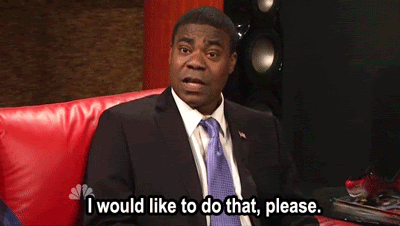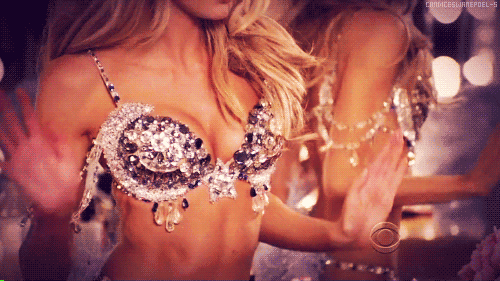In the era of YouTube and ubiquitous smartphones, it’s pretty easy nowadays for people to record video of themselves dancing, whether at practice or in competition. If you have never had someone take a video of your dancing, I highly recommend doing so at least once. You’ll see a lot of things that you can’t see when watching yourself in the mirror. It might be rather painful in the short run (“I had no idea I made those faces!” “What the *$()%@* am I doing?!”), but it will be good for your dancing in the long run.
There are many, many ways to go about recording video that are not optimal, and I see people doing this All. The. Time. Luckily, there are also many ways to do it right. Lots of credit goes to WBRoth11 for providing me with sage advice and some edits, as well as ES for input.
Here are some rules, roughly in order of importance.
1) Hold your phone horizontally.
DO NOT, I repeat, DO NOT hold your phone vertically like you typically would while using apps and scrolling through Facebook. Okay, so maybe you’ll have to use both hands, but vertical video is literally the worst. If you play back the video on a computer or upload it to YouTube, you’ll have those awful black bars on each side of the video. Vertical video is a cardinal sin – don’t ever do it!
- “But I’m going to watch it on my phone later!” Well, you can also easily rotate your phone to watch it, but you can’t magically change a video to be horizontal without cropping out the vast majority of the frame. And sometimes, rotating your phone while watching a vertical video just makes the video extra extra small, with a whole thick black frame around the whole thing. Awful.
- If you accidentally start recording vertically, just stop and start over vertically rather than rotating the phone mid-video. It’ll be difficult to edit and totally unviewable without some awkward neck-craning.
2) Know how the video function works.
This is especially important if you are using a phone/camcorder that is different from your own. Once, one of my friends had video of the breaks in between their dancing, rather than the actual rounds, because of a misunderstanding of the indicator symbol on the phone. Hint: if there’s a stopwatch-like set of numbers on the screen and the numbers are going up, it is probably recording.
3) Film from a high point.
Things just look better from above rather than from waist height or below. So, do not take a seat right next to the dance floor and record – it’ll just look weird. If there are risers, go to the highest back row. Another good option is finding some place around the dance floor where you’re not in anyone’s way and standing up while you record. In especially crowded events, standing up on a chair all the way in the back works well.
- As a bonus, filming from a high point helps you avoid filming any people’s heads or judges that might block the dancing. (See next point.)
4) Don’t film the audience members’ heads.
No one wants to see that. It’s hella distracting, and worse, it might block the dance couple from view. This is where strategic framing, positioning, and zooming can help you avoid this issue. If you have a judge standing in front of you, either move your arms or your whole body to avoid the same issue.
5) Use the zoom feature.
Probably by putting two fingers on the touchscreen and moving them away from each other. If you are focusing on one particular couple, you can’t see squat if they are tiny little figures at the opposite end of the dance floor. If they happen to move closer to you, zoom back out. A dancing head is equally unhelpful.
6) Follow the intended couple with your video frame.
If you are zooming properly, this will be a necessity. You can’t just float about aimlessly, or you will miss the dancing you’re trying to film. This means that you need to watch the video you are taking. Don’t get distracted by other dancers and sort of hold the phone/camera loosely and then realize you’re missing the couple you should be filming and scramble to reframe. Keep your eyes on the frame and the frame on your couple. (If you are recording the whole heat and no one in particular, then this doesn’t apply.)
7) Record each heat, rather than each full event.
This means making separate videos for, say, waltz, tango, and foxtrot. This makes finding a specific dance easier and minimizes random time between heats that no one cares about.
8) Be aware of your surroundings.
Don’t stand up where you would block people behind you. Don’t be in a place where lots of people are walking by. Don’t be right next to a group of loudly gossiping people. [Loudly gossiping people, also be aware if someone is filming in your vicinity!]
9) Position yourself in an ideal location around the dance floor.
For standard/smooth videos, a great position is about 2/3 down a long wall (so dancers are coming toward you for most of the wall when following line of dance). You get a better view of the routines there rather than at a short wall.
For rhythm/Latin, ideally you would have the couple dance right near where you are. But, since they move around, the best option is to be in the middle of a long wall – then, you have a good chance of being able to capture them anywhere they go.
10) Use a tripod if you have one, to steady the camera. This is also ideal if you plan on filming many heats and don’t want your arms to fall off. (Relatedly, try to avoid using an iPad or other tablet to record – they’re heavy and also likely to block other people’s views.)
11) If using a phone, switch it to airplane mode to avoid texts, phone calls, and other notifications from popping up. Calls are actually dangerous, because they will stop the record.
12) Bring an extra battery/power bank/etc. Videoing can drain a lot of power.
13) This next one is for when you are archiving / uploading the videos. Label the videos with as much as detail as possible – the event, the year, the level, the dance, the round (semi/final), etc. “Silver rumba” is not going to tell you much a few months from now, unless you only have one set of videos. “MVI 2049” is even worse.
14) If you want to put videos online, don’t use Facebook. I repeat, DO NOT use Facebook for video hosting. It’s super difficult to locate them again, particularly if you just post a single video on your wall. It’ll just get lost. Upload on YouTube, then link it on Facebook and get all the likes.
15) Finally, if you want to get some decent video of yourself, then make sure you have a trusted friend/team member/family member who knows all of the above information and is attentive regarding when you are dancing. Don’t just hand it off to a random person who you can’t trust to do a good job or someone who will space out and miss your first two dances.
Here’s an example of not-great video, graciously provided by my friend (who has much better videos nowadays):
First, it’s vertical. Cardinal sin! It’s filmed from the short side, with no zoom, so you often can’t see the intended couple clearly at all during the dance, and when you can, they look like dancing ants. People’s heads are distracting. And even when the couple is not super tiny or obscured, it’s still pretty vague regarding whom is even being followed due to the framing floating around. Also, vague video title.
Here’s an example of a much better one:
Watch it until about 1:00 in for a fun surprise!
This one’s horizontal, filmed from above (standing on a chair, on the back riser) and about 2/3 down a long wall, zoomed appropriately, and has relatively minimal shots of audience heads. The frame follows the intended couple. Very specific labeling so that it’s easy to search for later, if you are so inclined.
I hope those two examples show you a clear distinction between good and bad video. Happy filming! Please comment if you have any other thoughts or suggestions.













































